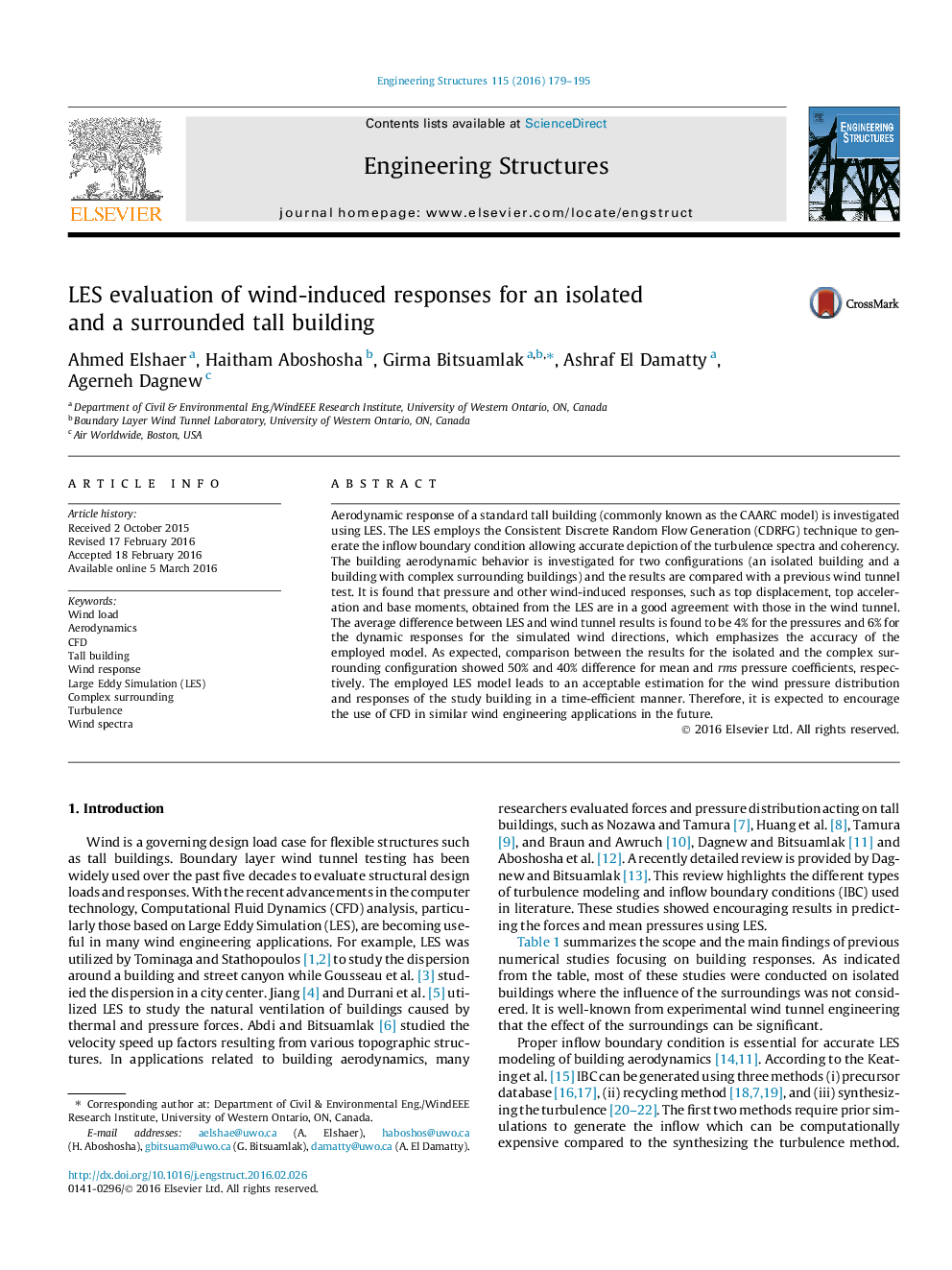| Article ID | Journal | Published Year | Pages | File Type |
|---|---|---|---|---|
| 265784 | Engineering Structures | 2016 | 17 Pages |
•Assess LES wind load evaluation using consistent inflow turbulence generation.•Compare LES wind load for a tall building with BLWT results.•Compare LES responses for isolated and complexly surrounded tall building.
Aerodynamic response of a standard tall building (commonly known as the CAARC model) is investigated using LES. The LES employs the Consistent Discrete Random Flow Generation (CDRFG) technique to generate the inflow boundary condition allowing accurate depiction of the turbulence spectra and coherency. The building aerodynamic behavior is investigated for two configurations (an isolated building and a building with complex surrounding buildings) and the results are compared with a previous wind tunnel test. It is found that pressure and other wind-induced responses, such as top displacement, top acceleration and base moments, obtained from the LES are in a good agreement with those in the wind tunnel. The average difference between LES and wind tunnel results is found to be 4% for the pressures and 6% for the dynamic responses for the simulated wind directions, which emphasizes the accuracy of the employed model. As expected, comparison between the results for the isolated and the complex surrounding configuration showed 50% and 40% difference for mean and rms pressure coefficients, respectively. The employed LES model leads to an acceptable estimation for the wind pressure distribution and responses of the study building in a time-efficient manner. Therefore, it is expected to encourage the use of CFD in similar wind engineering applications in the future.
